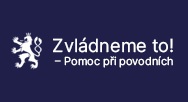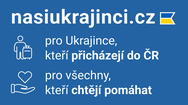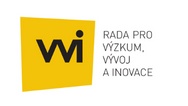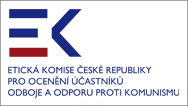Vystoupení Š. Füleho na "NATO Strategic Concept Seminar", "NATO´s fundamental security", Lucemburk 16.10. 2009
Vystoupení Štefana Füleho na téma: Adapting deterrence to the 21st century
• The concept of deterrence has been at the very core of NATO’s strategic mission right from the Alliance’s birth. Yet, its effectiveness has been debated ever since, although for the most part our deterrence was based on the Cold War logic of a single threat and its main principle was, thus, fairly straight forward.
• Since the end of the Cold War the picture is much more complex:
o We have been witnessing a major shift away from the familiar patterns of the bipolar logic.
o We are now confronted with completely new, largely asymmetrical threats, against which mutual self-assured destruction, backing our deterrence during the Cold War, can no longer be guaranteed.
• We must finally come to terms with these developments. NATO’s New Strategic Concept must address them effectively. Simply acknowledging that the Alliance’s deterrence abilities are based on an outdated logic would no longer do the trick. What we need is to reflect on an intense debate, that has been going on among the security and defense experts for some time now, on how to bring our deterrence posture up to requirements of the 21st century.
• For that, two key tasks, corresponding with the transformed geopolitical realities, should top up our „to do“ list:
o A: We need to agree on the common definition of adversaries WHOM TO DETER
o B: and analyze and assess the appropriate MEANS BY WHICH WE WANT TO DETER THEM
• Let me elaborate on the two points. Coming back to the threats challenging the security of the Alliance. Until we agree on their definition, we cannot start any serious efforts to strengthen our deterrence abilities.
• We no longer have “the Cold-War era luxury” of facing a single, clearly defined threat. What we stand against these days is much wider range of both state and non-state threats. These include not only failed states but also terrorist groups and militias, all lacking a single leader and coherent ideology.
• What they have luckily also lacking so far is the access to nuclear technology and weapons of mass destruction. That should not be taken for granted, in part also given the course of events in Iran and North Korea and the instability of the government in Pakistan.
• The Alliance is hardly prepared for any of these very real possibilities, which relates to my second point. We have to have a serious discussion on how to approach these threats.
• I think we could all agree on one thing. What we face in this fast evolving security environment is a multiplicity of threats, which require multiple responses. And for that the NATO strategies, based on 20th century reality and rather abstract assumptions about deterrence, no longer provide sufficient means.
• The question is what would be the best way to substitute them? As for myself, I am a strong proponent of the idea of the “tailored made deterrence”, as it entails focusing on both wide ranges of threats as well as corresponding means to deter them.
• I am aware of the intrinsic problems that could arise in its implementation, connected to the fact that some threats cannot so easily be deterred or because of the need for accurate intelligence to understand the specific adversary. By the way the relevance of the thesis that “The more we know the better informed decision about deterrence we can make” should make intelligence even more relevant in NATO’s work.
• Nonetheless, I am convinced that if we get into it we can come up with appropriate solutions to these open questions as similar difficulties have been present throughout the whole of the Alliance history. Moreover, we are not searching for the perfect, trouble fee option. The Cold War concept of nuclear deterrence has never been considered ideal given its enormous costs and very high risks, but rather tolerable.
• What I see as the major challenge, should the Alliance decide to opt for the “tailor made concept”, is the defining and agreeing on what are the appropriate measures specific adversaries might find credible and deterring in their particular context.
• Before the blueprint of the New Strategic Concept come to light, we have to get together and address some fundamental questions:
o What is the meaning of Article V – the symbolic beacon of deterrence in the fast evolving security environment featuring asymmetrical treats?
- Washington Treaty makes a link between Article 5 and armed attack. But in current circumstances cyber attacks or denial of energy could make even greater harm than armed attacks. Interestingly enough we have activated Article 5 only once and not in a connection of direct armed attack. Concept of 1999 is using expression of aggression thus covering wider range of threats. This time we should push this even more.
o Given these asymmetrical threats and despite being the sole means capable of triggering a complete destruction of any country, is nuclear deterrence still by far the most efficient concept. Can non-state actors having no single country to retaliate against be meaningfully deterred by it?
o And what about irrational actors, think of Saddam Hussein, can those be deterred at all? Should pre-emption, as embedded in international law, have a place in our strategies?
o Looking at North Korea that has already crossed the nuclear threshold and Iran that is about to do so, should not we seriously start solving the question of a fully fledge missile defense protecting Europe?
o And irrespectively of missile defense, how should we adapt our conventional forces to better correspond to the present security requirements and the Alliance missions “out of the area.” It seems obvious to me that a technological advantage should be used as a technological deterrence.
- Summarizing: 1/ New strategic concept should reflect more complex nature of deterrence. Variety of different threats requires various capabilities. 2/ Deterrence should be applied out of area. Our operation should be considered a part of that process. By the way I would make similar statement on partnership. 3/ Deterrence as a resolve to act should involve more actors, not just NATO. 4/ Deterrence would work only if it is translated in contingency and operational planning of our military and forms a part of daily political dialogue in the NAC and with our partners.
- As a Central European I am supposed to make a reference to deterrence of Russia at least before I conclude. I won’t make it. Instead let me underline that people in each country represented in this room should share high level of satisfaction about the effects of deterrence. Everybody is to feel secure enough because of deterrence. That does not mean the same level of security or perception of security – I am not an idealist and we do not live in an ideal world. Concept of tailored deterrence could provide that level of satisfaction. And to avoid fragmentation and have a coherent deterrence we need an effective transatlantic link and the US lead in ensuring such deterrence.
- And final message at the end – the best deterrence is the Alliance cohesion and credibility based on “One for All and All for One”. And that should be our mantra preparing the new strategic concept.
I look forward to your feedback on that. Thank you for your attention.






